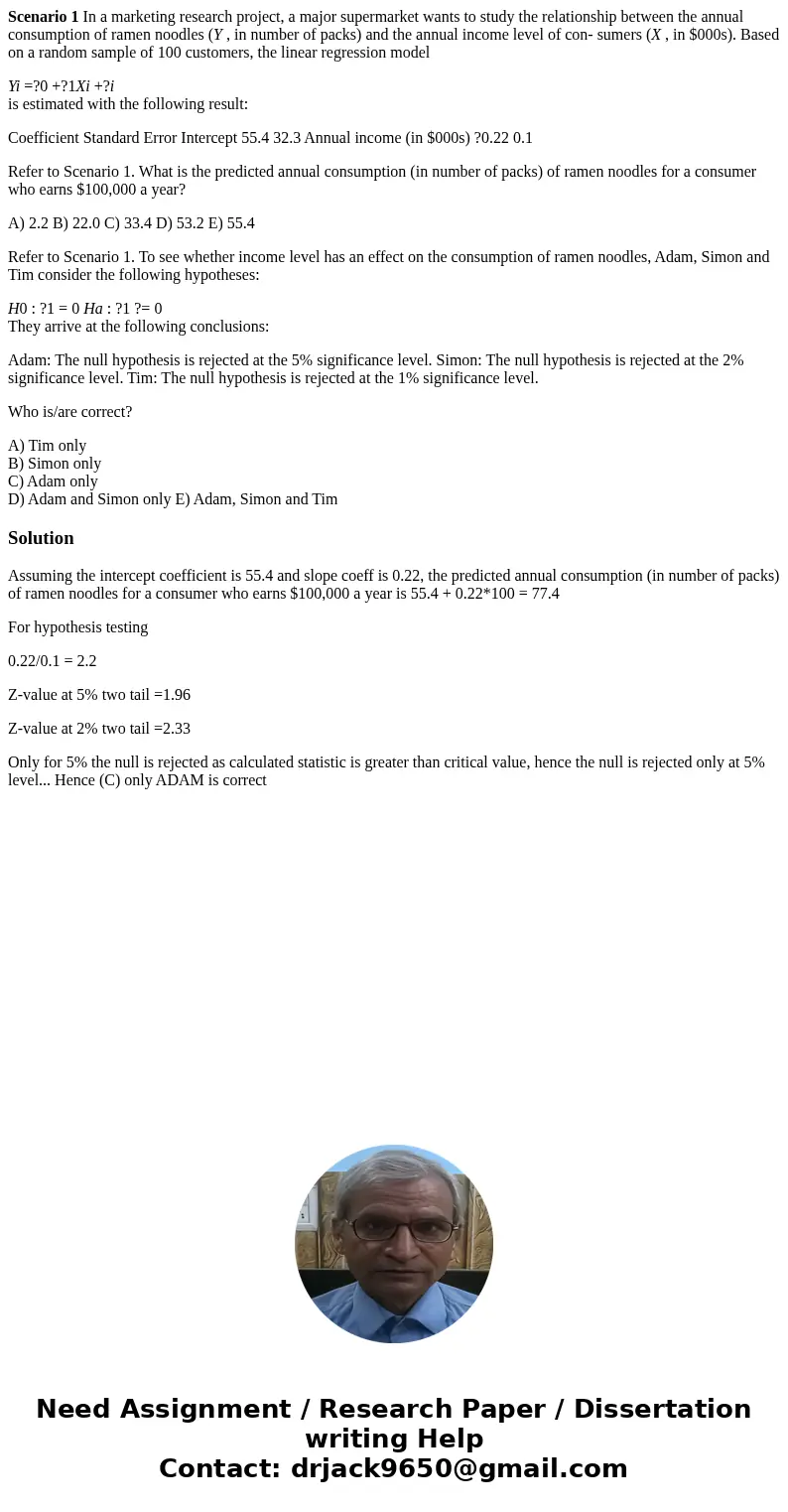Scenario 1 In a marketing research project a major supermark
Scenario 1 In a marketing research project, a major supermarket wants to study the relationship between the annual consumption of ramen noodles (Y , in number of packs) and the annual income level of con- sumers (X , in $000s). Based on a random sample of 100 customers, the linear regression model
Yi =?0 +?1Xi +?i
is estimated with the following result:
Coefficient Standard Error Intercept 55.4 32.3 Annual income (in $000s) ?0.22 0.1
Refer to Scenario 1. What is the predicted annual consumption (in number of packs) of ramen noodles for a consumer who earns $100,000 a year?
A) 2.2 B) 22.0 C) 33.4 D) 53.2 E) 55.4
Refer to Scenario 1. To see whether income level has an effect on the consumption of ramen noodles, Adam, Simon and Tim consider the following hypotheses:
H0 : ?1 = 0 Ha : ?1 ?= 0
They arrive at the following conclusions:
Adam: The null hypothesis is rejected at the 5% significance level. Simon: The null hypothesis is rejected at the 2% significance level. Tim: The null hypothesis is rejected at the 1% significance level.
Who is/are correct?
A) Tim only
B) Simon only
C) Adam only
D) Adam and Simon only E) Adam, Simon and Tim
Solution
Assuming the intercept coefficient is 55.4 and slope coeff is 0.22, the predicted annual consumption (in number of packs) of ramen noodles for a consumer who earns $100,000 a year is 55.4 + 0.22*100 = 77.4
For hypothesis testing
0.22/0.1 = 2.2
Z-value at 5% two tail =1.96
Z-value at 2% two tail =2.33
Only for 5% the null is rejected as calculated statistic is greater than critical value, hence the null is rejected only at 5% level... Hence (C) only ADAM is correct

 Homework Sourse
Homework Sourse